All of your resources need to be in top form to achieve the goals and objectives of your work. When it comes to equipment, there’s an approach to this called total productive maintenance (TPM). Total productive maintenance helps you achieve equipment reliability and keeps your machines always working at their best.
Whether you’re a project manager, facility manager or part of a maintenance team, you need to know what TPM is and employ it to keep your business productive.
What Is Total Productive Maintenance (TPM)?
Total productive maintenance, or total preventive maintenance, is a full approach to maintaining equipment. The goal is to improve production by being proactive and preventative. This means that your equipment will be less likely to experience breakdowns, stoppages, running slow or defects.
Instead of responding to a situation, total productive maintenance looks to deal with issues before they occur. Companies do this by expanding the role of operators and giving them what they need to maintain their equipment.
TPM programs open up a shared relationship for the responsibility of the equipment. Operators, as well as plant workers, are all involved in maintaining equipment. As you can imagine, such an approach can boost productivity, increase uptime, reduce cycle time and drastically reduce equipment defects.
Naturally, accomplishing this holistic approach to maintenance requires accurate monitoring of your work. ProjectManager captures real-time data that helps you track time, workload and much more. Always be on top of your projects with kanban boards, live dashboards, instant reports and dynamic Gantt charts. The kanban board is a great way to monitor production processes and catch bottlenecks in real time. Get started with ProjectManager for free today.
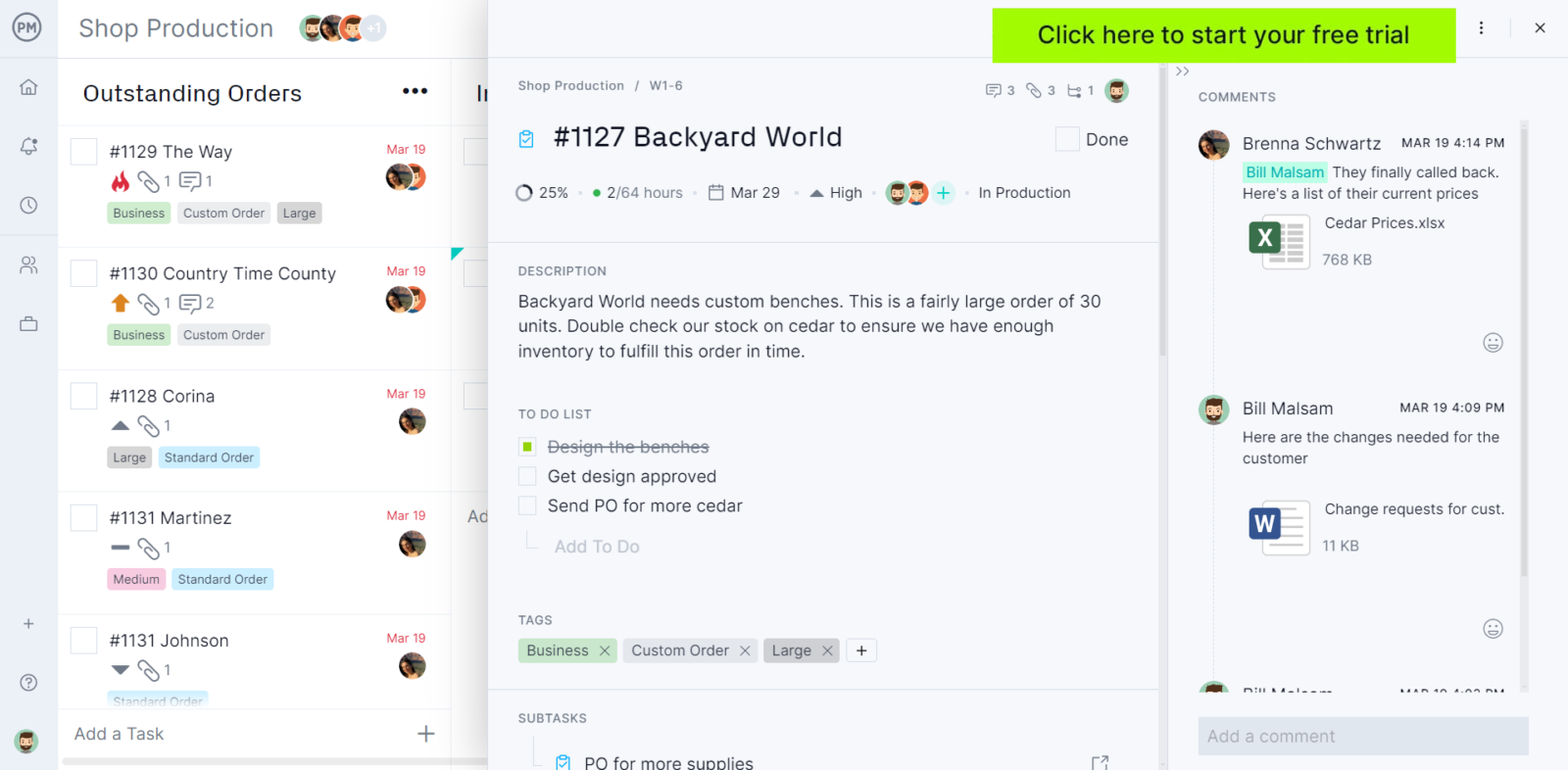
Total Productive Maintenance & Overall Equipment Effectiveness
When working within a total productive maintenance approach, you need metrics to ensure you’re improving productivity. By using overall equipment effectiveness (OEE), you can identify the percentage of planned production time that is, in fact, productive.
OEE was created for TPM and is used when tracking the progress you’re making toward achieving better productivity. It works by percentage:
- 100% is perfect. Aim for this!
- 85% is a world-class distinction for discrete manufacturers.
- 60% is a typical grade for discrete manufacturers.
- 40% is usually when manufacturers are not using TPM.
Components of Overall Equipment Effectiveness
Three components comprise Overall Equipment Effectiveness. Each one of those components connects directly to a TPM goal, and takes into account a different type of productivity loss:
- Availability: This corresponds to the TPM goal of having no stops in production while taking into account availability loss (all events that stop productivity for an appreciable length of time).
- Performance: This takes into account performance loss, which means anything that causes production to not achieve its best possible speed when running, such as slow cycles and small stops throughout the production cycle.
- Quality: This takes into account quality loss. That is, whatever manufactured pieces are not up to the quality standards that you set. This might mean a piece that requires reworking, something rejected from the production line or a reduced yield on startup.
To calculate OEE, you need five data points: planned production time, stop time, ideal cycle time, total count and good count. Some benefits of using OEE include greater accuracy of manual unplanned stop time tracking, decreased small stops and slow cycles, and better operator focus.
Key TPM Elements
When employing self-directed maintenance, machine operators are given more power when maintaining their machines and equipment. This lean production leads to increased productivity, lower costs, improved quality and extends the lifespan of your equipment.
The TPM process was founded on the eight pillars of TPM and the five S’s. Let’s take a moment to dive into both of these essential elements for total productive maintenance.
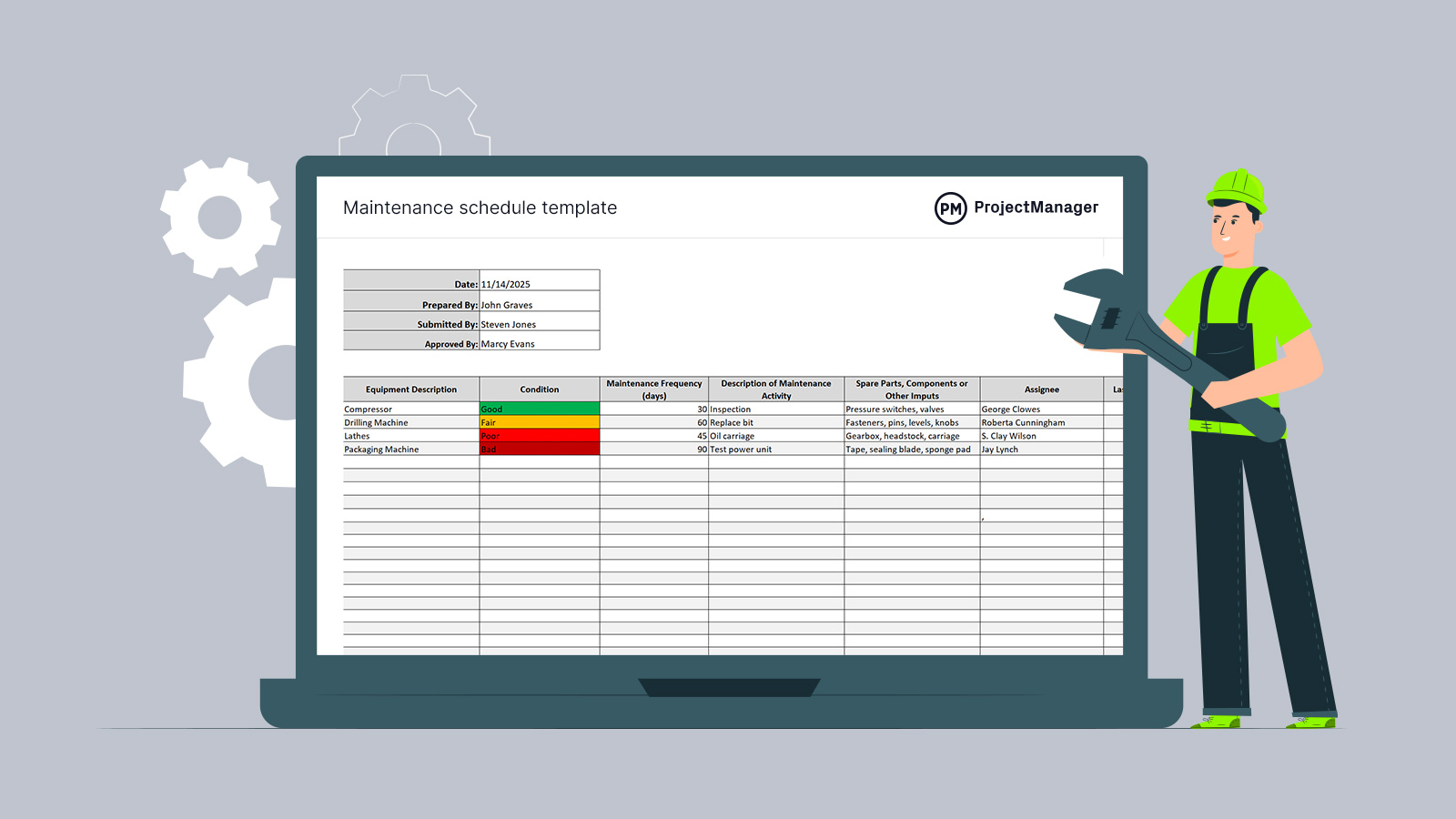
Get your free
Maintenance Schedule Template
Use this free Maintenance Schedule Template for Excel to manage your projects better.
The 8 Pillars of Total Productive Maintenance
These eight pillars are meant to support a proactive establishment of machine reliability. Each of these pillars revolves around empowering your workers. To have a successful TPM, you must train employees to identify and eliminate waste.
1. Autonomous Maintenance
Also called by the Japanese phrase Jishu Hozen, autonomous maintenance is the act of giving operators the responsibility of maintenance of their machinery or equipment. This allows maintenance staff to use this freed time to deal with more complex maintenance tasks. Some activities that operators can take on include the basic cleaning of their equipment, diagnosis of possible issues and other tasks that improve productivity.
2. Planned Maintenance
This requires scheduling maintenance activities based on the behavior of the equipment that the operators observe. That could be the failure rate of the machine and the number of breakdowns that are occurring. Use these metrics to set up maintenance schedules that will lead to longer service life for the equipment.
3. Quality Maintenance
To make sure you maintain quality management, the equipment has to be able to detect and prevent any errors that show up in production. If you can reduce errors, you can satisfy the specifications the first time through the production line, which in turn adds to productivity. This prevents a poor-quality item from moving down the production line or value chain, which results in a lot of rework.
4. Focused Improvement
Also referred to by the Japanese phrase kobetsu kaizen, it means the creation of cross-functional teams to work on problematic equipment and suggest improvements. The use of cross-function teams is essential to bringing many different employees together. Hybrid teams are more likely to come up with solutions to issues and increase your worker’s knowledge of their equipment and its maintenance.
5. Early Equipment Maintenance
You can accomplish the goal of having equipment and machinery reach an optimal performance earlier than usual by using the experience gathered from the prior pillars. This involves working with stakeholders, such as suppliers, to get started with reliable equipment. Doing so positively impacts profitability due to fewer maintenance costs.
6. Education and Training
Total productive maintenance is a learned trait and therefore requires constant education and training to keep everyone in the company knowledgeable. If TPM is used without the proper education and training, it can lead to dire consequences. Having a large, knowledgeable staff can drive productivity by following maintenance planning best practices.
7. Health, Safety and Environment
While we’ve focused on the maintenance of the equipment, we noted earlier that this approach will win or fail by the people involved. Therefore, maintenance personnel and employees must have a safe place to work, without undue risks to their health. You must identify and rectify any harmful environments. Even though delivering value to customers is a priority, it cannot be achieved at the cost of your workers’ safety.
8. TPM in Office Functions
It only makes sense to expand the TPM approach to administrative functions. This puts everyone in the organization on the same page. Administrators can apply TPM principles of lean manufacturing in their operations, and in turn, improve their efficiency. It will also encourage horizontal cooperation and benefit the whole company by having everyone understand the value of TPM.
Maintenance Schedule Template
This free maintenance schedule template for Excel helps you plan, schedule and track the status of maintenance activities, which can help implement total productive maintenance in your organization. You can also specify the frequency for these activities, the spare parts or materials needed, a brief description of the work to be done and keep track of the last maintenance date and the date for the next scheduled maintenance.
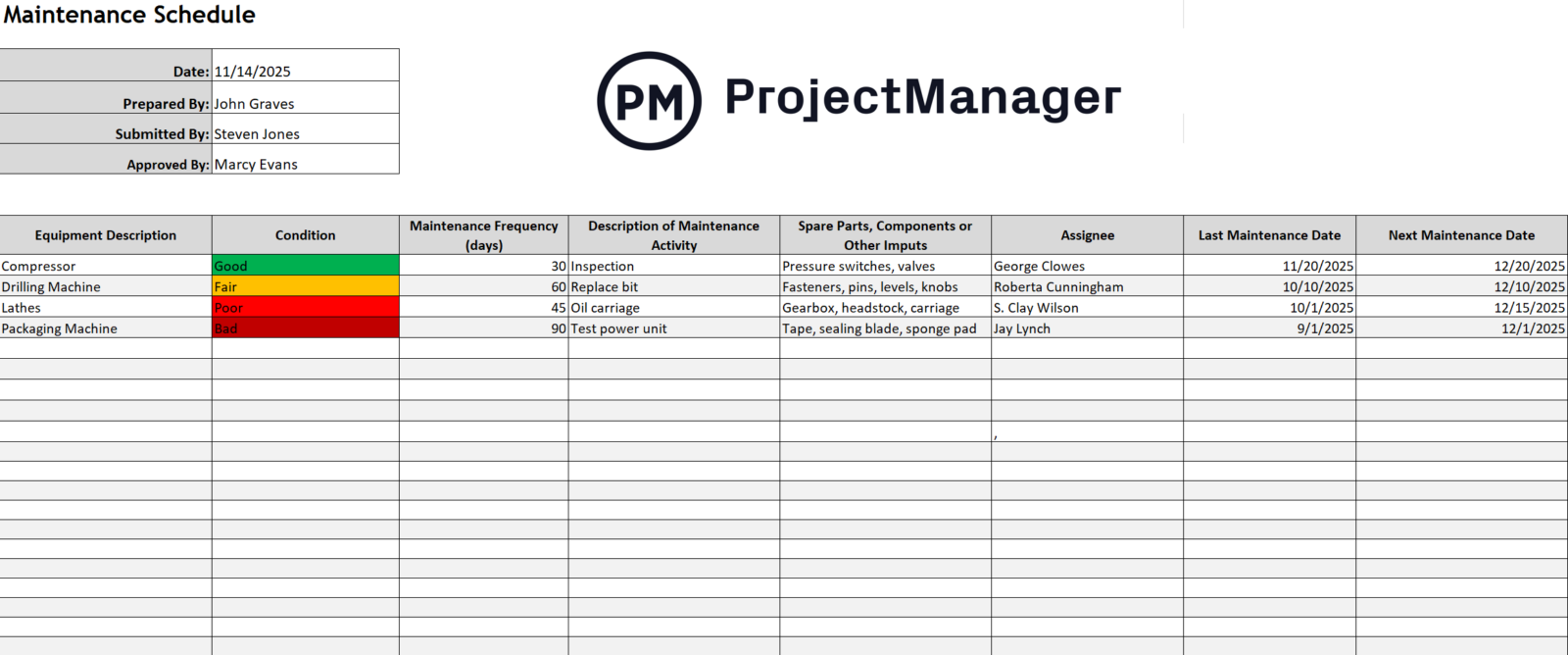
The 5S of Total Productive Maintenance
Another foundation of a lean TPM program is the 5S. It provides structure and organizes the work, adding discipline and efficiency to the process. Using the 5S leads to a clean, visually organized workplace, which is self-maintaining. The 5S’s are as follows.
- Sort: Clean your worksite of all unnecessary items.
- Systemize: What’s left should be organized to make these raw materials quick and easy to find.
- Shine: Keep your work environment clean and organized, not merely for the positive effect on your employees, but also to make it easier to see issues in the workspace.
- Standardize: Document your improvements to the production process to have a record and create a springboard to more improvements and training.
- Sustain: Schedule regular audits to make sure improvements are being followed and to measure effectiveness.
The 6 Big Losses and OEE
Six common issues can lead to a reduction in productivity. It’s important to know what they are and identify them quickly to resolve the problems that are causing waste in your process. Things like unplanned downtime can be costly. The six big losses in production OEE are as follows.
- Machine breakdowns, not to be confused with small stops.
- Setup loss and minor adjustments.
- Minor stoppages, less than five minutes and not requiring technical intervention.
- Slow running prevents achieving the desired capacity and speed.
- Startup errors that happen before the actual start of the process.
- Product defects that occur during the running of the process.
How to Implement Total Productive Maintenance
If you’re working with machinery or in manufacturing with reliance on properly functioning equipment, then total productive maintenance is a must. Implementing TPM is a five-step process.
Step One: Pilot Program
Find a small part of your manufacturing process that can benefit from TPM. It’s a good way to introduce the process and get buy-in from your staff. You can target areas of quick gains or bottlenecks but be careful where you choose to run the pilot. There are risks that it could disrupt if poorly implemented.
Step Two: Restore Equipment
Return your equipment to its basic condition by applying for the 5S program. Then, record the current state of your machines, remove anything unnecessary, store remaining tools, clean, record the new state of the equipment, train and then audit regularly. Also, refer to autonomous maintenance discussed in the eight pillars of TPM.
Step Three: OEE Tracking
OEE Tracking will identify what’s causing the downtime on your critical machines. This data collection must take place over a long period, at least a month, to get enough information to analyze and draw insights.
Step Four: Reduce Losses
Following the focused improvement pillar of TPM, apply a systematic process to reduce major losses based on the data collected in the previous step. This includes selecting a cross-functional team, analysis of data, doing a root cause analysis, implementing solutions within a timeframe and verifying effectiveness.
Step Five: Planned Maintenance
Once you’ve completed the prior steps and feel that you’re beginning to get benefits from TPM, you can start a process of planned maintenance for continuous improvement. Your machine parts will wear out, and you can put countermeasures in place to extend their life cycle. Documentation is critical. You need to know the frequency of parts wearing out for preventive maintenance and replacement data should also be collected.
How ProjectManager Helps Cross-Functional Teams
The key to successful total productive maintenance is your team. These teams are made up from the factory floor to maintenance operators and many other departments. Hybrid teams such as these rely on the collaborative-to-the-core ProjectManager, a cloud-based hybrid work management software.
Work in Multiple Project Views
Hybrid teams are spread out, some working traditionally others in a more agile environment and they need software that can support their multiple roles. That’s why ProjectManager has multiple project views. Maintenance managers can plan on Gantt charts and workers can use either a dynamic task list, calendar view or kanban board, which visualizes the workflow for greater transparency. Everyone knows what everyone else is doing and can work better together.
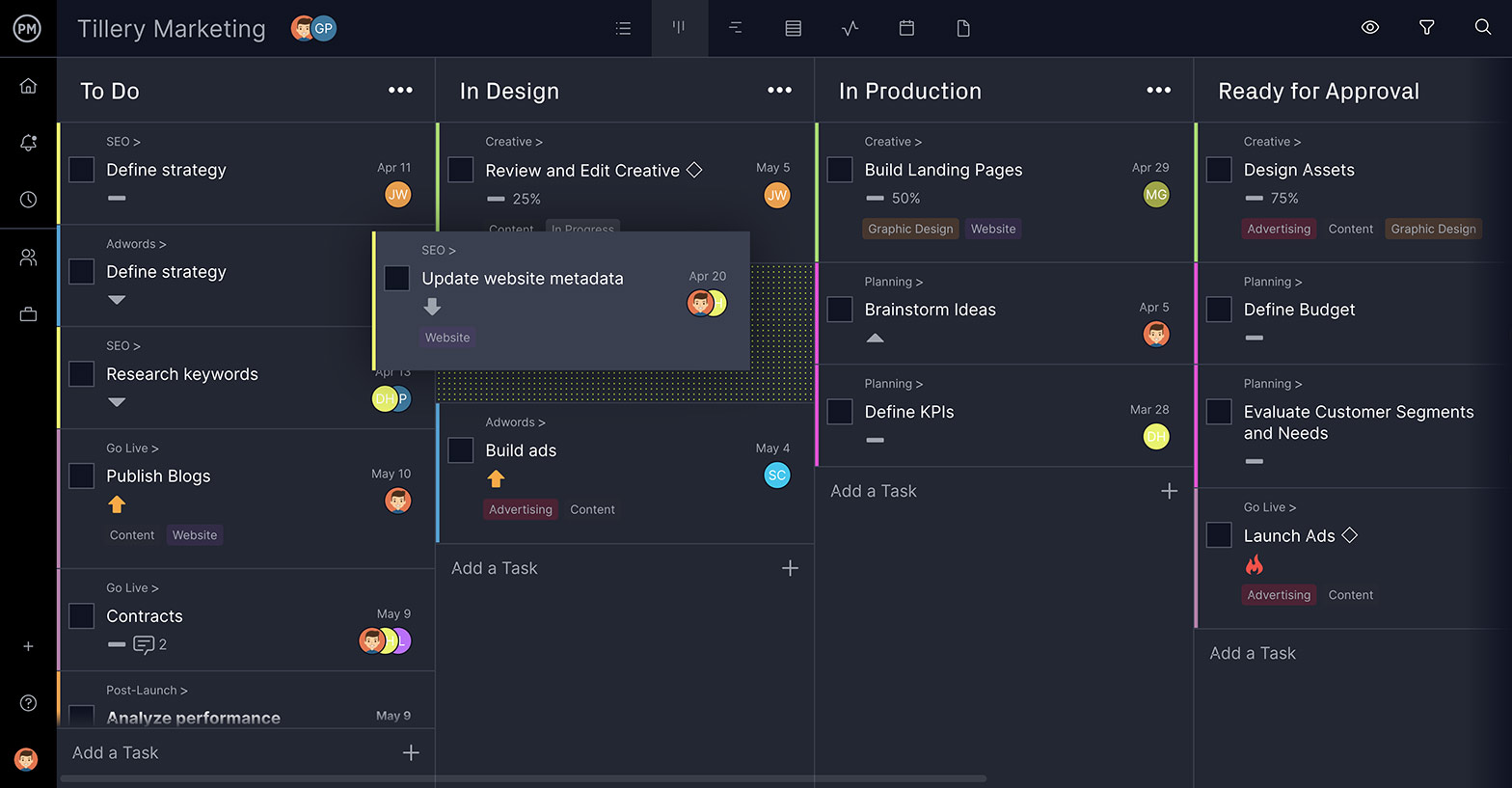
Collaborate in Real-Time
Keeping cross-function teams functioning is all about communication. ProjectManager is online, which means you’re working in real time. Post comments to tasks and even tag those not assigned to that task and pull them into the conversation. Email and in-app notifications keep you updated so you never miss any updates. You can even attach and share documents.
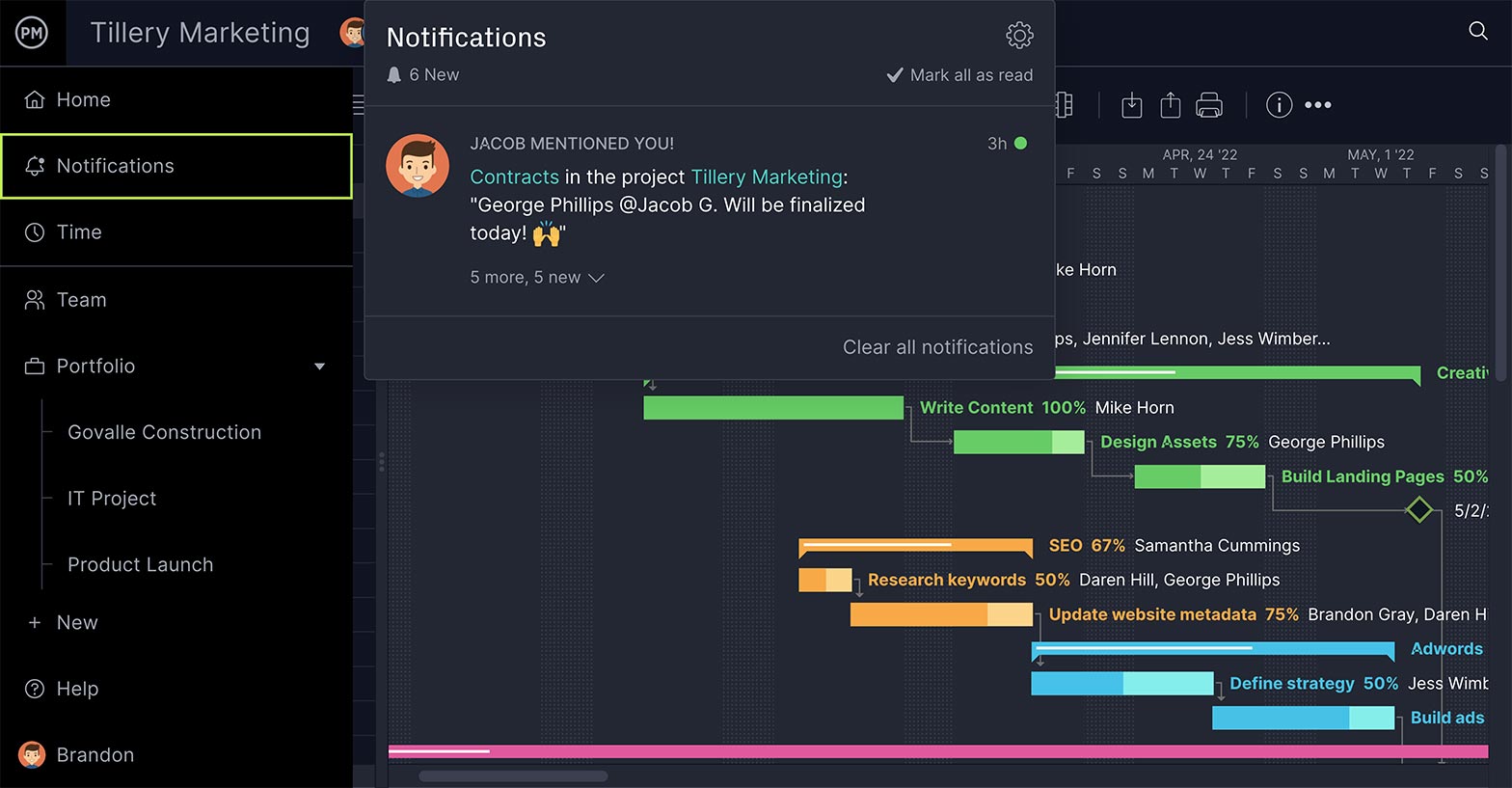
Manage Teams on the Floor and in the Office
Managing hybrid teams can be difficult. If you’re not in direct daily contact, some might have too few tasks while others are overburdened. That can lead to poor productivity and low morale. But ProjectManager’s workload chart is color-coded so you can see at a glance everyone’s allocation and reallocate from that page as necessary.
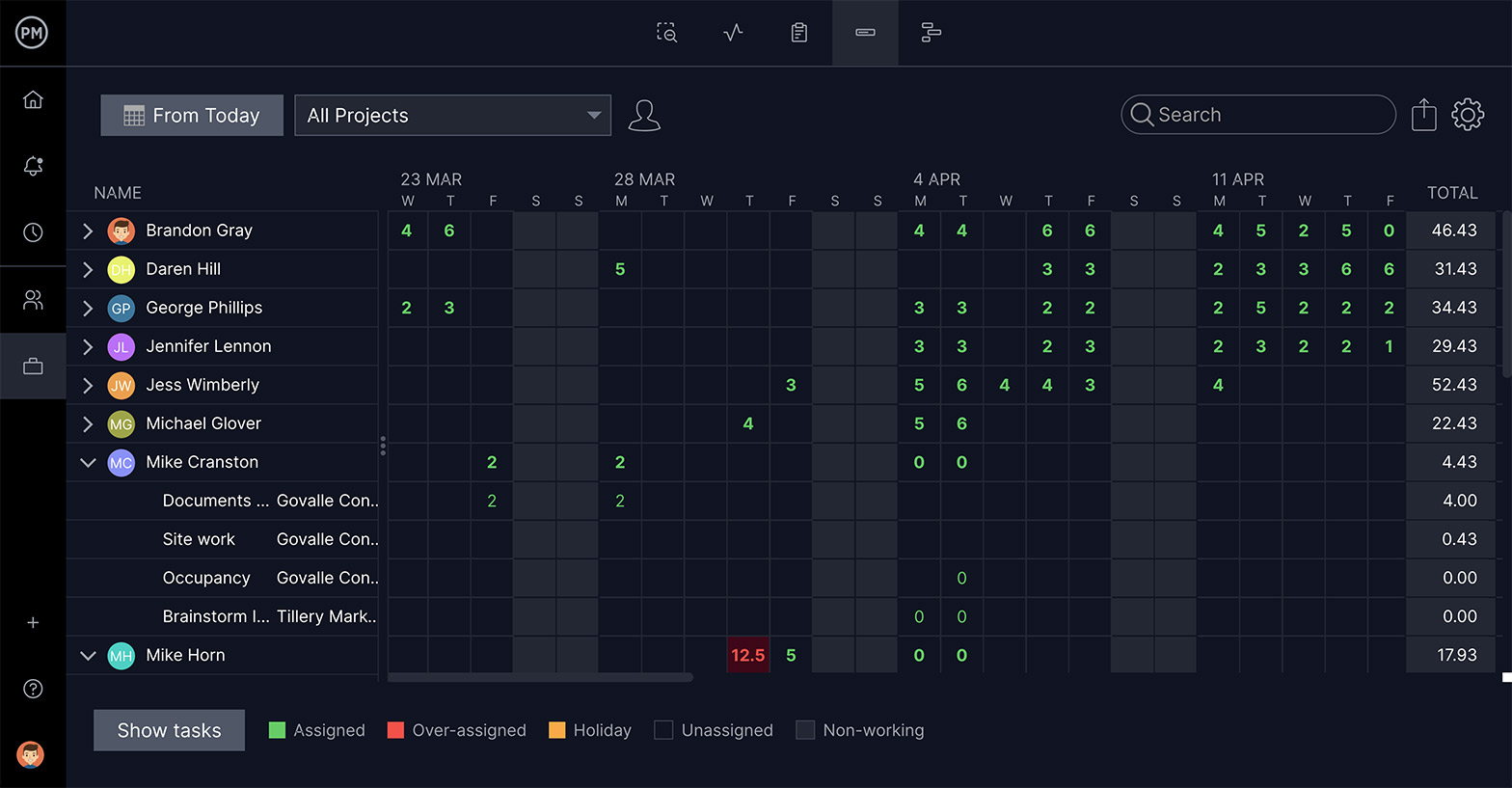
ProjectManager is award-winning project management software that connects and organizes for greater efficiency. Join the 35,000-plus professionals already using our tool at organizations as varied as NASA, Siemens and Nestles. Get started today for free!

